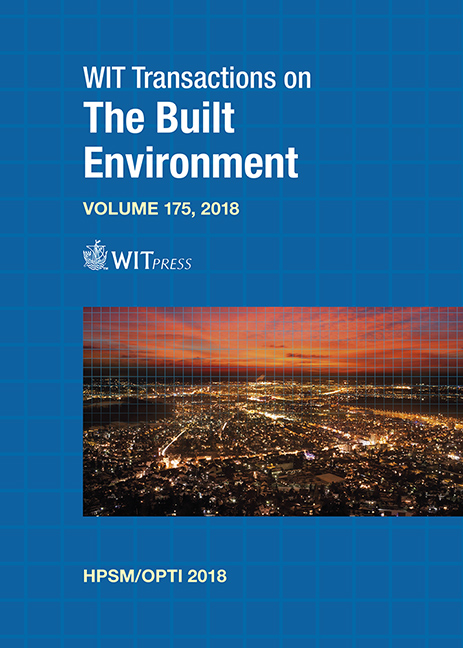EXPERIMENTAL STUDY OF TIMBER–TIMBER COMPOSITE MEMBERS
Price
Free (open access)
Transaction
Volume
175
Pages
10
Page Range
83 - 92
Published
2018
Size
701 kb
Paper DOI
10.2495/HPSM180091
Copyright
WIT Press
Author(s)
FARSHID NOURI, MARK A. BRADFORD, HAMID VALIPOUR
Abstract
Timber is a sustainable construction material having a higher strength to density ratio, lower embodied energy and a lower carbon footprint when compared with conventional construction materials such as steel and concrete. Furthermore, the advent of engineered wood products including glued laminated timber (Glulam), cross laminated timber (CLT) and laminated veneer lumber (LVL) with improved mechanical properties and dimensional stability has provided the opportunity to construct multi-storey timber buildings with robustness and reliability comparable to steel and reinforced concrete structures, but with far less environmental intrusion. This paper investigates the behaviour of CLT panels connected to LVL and/or Glulam timber joists by coach screws, creating a timber–timber composite (TTC) member. The load-slip behaviour and failure modes of the CLT–LVL and CLT–Glulam composite members are characterised by conducting push-out tests and the effect of the CLT lamellae orientation, screw size and inclination and the edge distance in conjunction with the type of timber joist (LVL, softwood/hardwood Glulam) on the structural behaviour of the TTC members are investigated. Finally, an empirical model for the load-slip response of the TTC members with dowel connections is developed and calibrated from non-linear regression of the push-out test data.
Keywords
cross laminated timber (CLT), load-slip, screw, shear connector, timber–timber composite (TTC)





